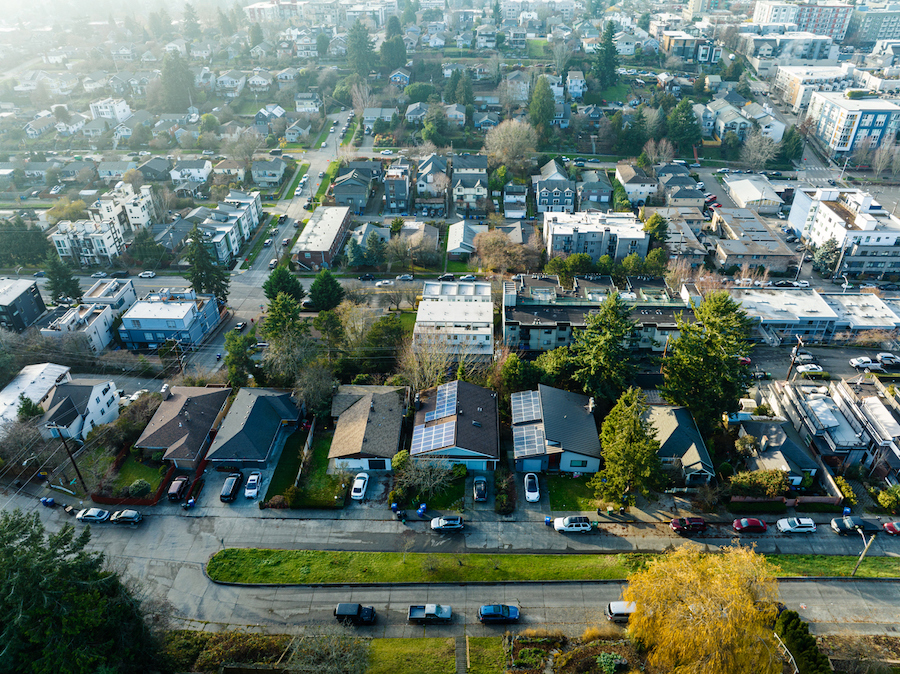
Photo:
Photo: iStock
With surging costs impacting everything from home prices and rent to toilet paper, families are struggling. A recent report shows that 14.1 percent of consumer spending in Washington is dedicated to household items — ranking our state as the 11th top spender in this category nationwide.
Homeownership out of reach for many Washington families
For many local families, rising everyday costs are influencing longer-term family planning and housing choices. Tash Haynes, a Tacoma-based mom of three and social media influencer, describes how her family’s goals have changed dramatically. “Before the pandemic, we were actively planning to buy a home, but with the rising cost of living in Tacoma, homeownership has become unattainable for us, at least for now,” she says. Haynes also noted that a possible expansion of her family has been put on hold due to the current cost of living. “Our current family size is likely to remain as is, given the financial realities,” she shared.
According to a recent report by Axios, Washington has seen home prices skyrocket by a staggering 828 percent over the past four decades, far outpacing the national average of 500 percent. This meteoric rise — highlighted as the highest in the nation — reflects the intensifying struggle for housing affordability across the state. In fact, nearly 73 percent of Washington households are now priced out of purchasing a median-priced home, which averages around $640,000.
In the Seattle metro area, where the median sale price for a home is an even steeper $842,098, affordable options are vanishingly rare for middle-income families, with less than one percent of listings within reach. Meanwhile, the state’s Department of Commerce warns that the housing crisis could persist for decades, projecting a need for nearly one million new homes by 2044 to address the shortfall.

Food banks are sounding the alarm
“There seems to be an assumption by the general public that everything went back to normal after the pandemic ended,” says Rehana Lanewala, director of development and communications with Seattle-based FamilyWorks Resource Center and Food Banks. “But the need we’re seeing in the community is higher than it’s ever been.”
For many local families, food banks are an essential lifeline. According to recent analysis by Trace One, Seattle ranks as the sixth most expensive city for groceries in the U.S., with a family of four spending an average of $289 weekly on food alone. For families already struggling, these price hikes can mean difficult choices between buying groceries, paying essential bills or accruing debt.
As Seattle-area grocery prices continue to surge, FamilyWorks has launched a $7 million campaign, Nourishing Communities, with the aim of doubling the number of families served by 2027. The plan includes key initiatives like expanding the Wallingford Food Bank, enhancing their Mobile Food Pantry, and providing onsite support at affordable housing communities and schools.
Emergency assistance is dried up or inaccessible for many families
One effect of the pandemic was the temporary support many families received through emergency financial assistance. This aid allowed families a measure of stability, which Lanewala says was invaluable. But with those supports now largely expired, the situation has worsened. FamilyWorks, she explains, “is currently serving double the number of households we served pre-pandemic, and we expect to double again by 2027.”
Adding to the crisis, public benefits programs like the Supplemental Nutrition Assistance Program (SNAP) use the federal poverty line to determine eligibility, but these thresholds often fall short in high-cost areas like the Puget Sound. As Lanewala explains, “When you live in an expensive area, you can have a household income well above the federal poverty line and not qualify for assistance, yet still not be able to afford to live here.”

The cultural impact of the affordability crisis
For many local families of color, immigrants and refugees, the spiking cost of living comes as an additional burden to bear. For these communities, the challenges of affordable housing and rising prices are not just financial, but also cultural and emotional, as historically disenfranchised communities are increasingly displaced from neighborhoods where they have lived, worked and built networks of support for generations.
“The rising cost of living over the past several years has been particularly difficult for those already impacted by systemic barriers,” explains Rachel Oppenheim, manager of curriculum and research with Seattle’s Equity in Education Coalition.
Furthermore, the displacement of essential workers has created a unique hardship that impacts the entire Puget Sound region. As prices continue to soar, many service providers are forced to commute from distant locations, which erodes their ability to engage fully with the communities they work in, while contributing to a sense of disconnect between residents and those who serve them.
What happens when teachers are priced out
Oppenheim stresses that this dislocation comes at a cost to not just community cohesion, but also education quality, especially in areas where schools are already battling for equitable resources. “In cities like Seattle, where I live, the people who provide direct service to the community—including teachers, nonprofit professionals, childcare providers and restaurant workers—are no longer able to live near their place of work,” she says. “This causes immense hardship for those professionals and is a loss to the city itself.”
Across the country, many schools have demonstrated better educational outcomes when teachers live within the communities where they serve. Oppenheim notes, “Research clearly shows that [students] farthest from educational justice experience significantly improved outcomes when their teachers live in proximity to their schools and are more closely representative of their own communities.”

Families are finding creative solutions
Even amid rising costs, many local families are finding creative ways to invest in their relationships and communities. Reanne Gamet, a South Seattle mom of three, has adopted a more intentional approach to spending in recent years.
Gamet explains, “Our family’s spending has changed after the pandemic as we became more intentional on spending the money we have on experiences like travel to visit family or new places, over just buying stuff.” Her sentiment reflects a broader trend of families emphasizing experiential spending — opting for meaningful experiences over material goods.











